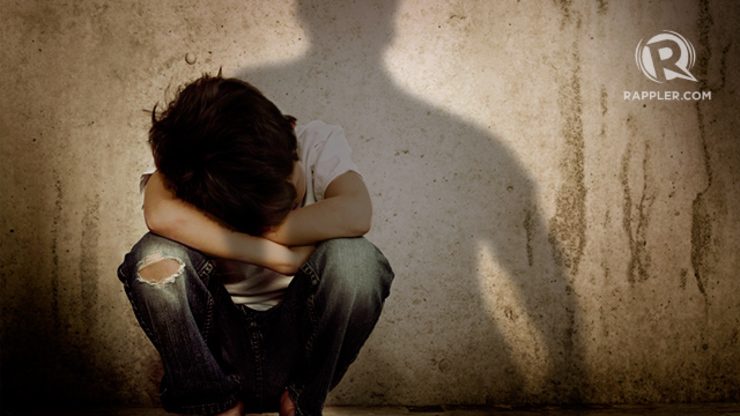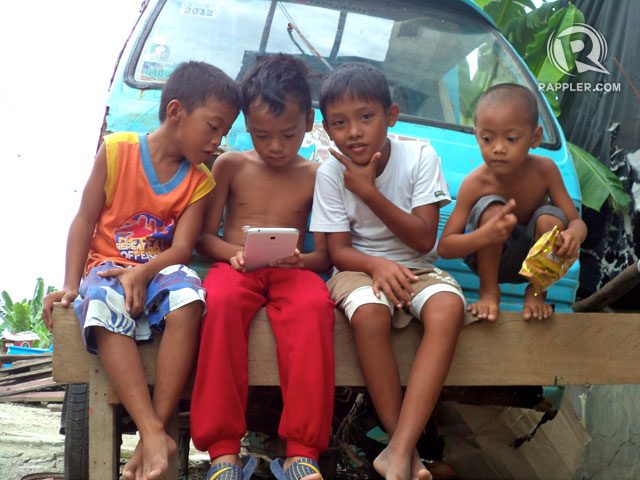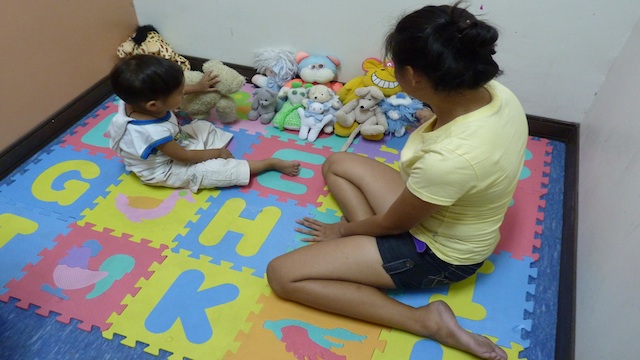SUMMARY
This is AI generated summarization, which may have errors. For context, always refer to the full article.

MANILA, Philippines – About a month after Super Typhoon Yolanda (international name: Haiyan) ravaged his home, Intoy* almost fell prey to a different kind of threat.
He was happily playing with other children near one of the crowded evacuation centers in Tacloban City, when a man suddenly appeared and attempted to molest him according to a social worker in the Department of Social Welfare and Development Regional Field Office VIII. Fortunately for Intoy, his playmates saw what the man was trying to do and called his father for help. The boy was saved but the suspect escaped and was never found again.
Carmela Bastes, Center Head of Tacloban City’s Social Welfare and Development Office, says that there are more than 100 incidents of violence against women and children recorded by their office from January to September 2014.
Security issues
Though disasters affect people indiscriminately in affected areas, one of the hardest hit are typically women as well as children. This is because disasters also make them more vulnerable to various forms of violence, even sexual abuse.
Reported cases of rape, for instance, tend to increase following disasters and emergency situations due to various reasons, according to social workers.
“When there is a disaster, there is a spike in violence against women and children like rape,” said Atty. Clara Rita Padilla, Executive Director of EnGenderRights, a legal non-governmental organization (NGO) that advocates the rights of women, lesbians, bisexuals and transwomen.
This was the case during the Zamboanga siege which forced many to leave their homes for evacuation centers. In September 2014, a 6-year-old girl was raped by a distant relative in one of Zamboanga’s evacuation centers.

Power outages, which usually follow major storms, give rise to security issues such as lack of lighted pathways and segregated toilets in evacuation centers. These provide opportunities for abuse.
At the time Intoy was attacked, Tacloban City had a power blackout, and his evacuation center was not well lighted.
Limited space in temporary shelters of evacuees expose children to activities strictly for adults only. Poor police presence in evacuation centers compound the problem.
Loss of income
Disasters also tend to trigger increased migration, according to experts, as parents who lost their sources of livelihood following a calamity may be compelled to look for jobs in other towns or countries to support their family.
When that happens, children are left in the custody of their relatives or other people, which makes them vulnerable to maltreatment.
Yolanda left many people homeless in its wake. Food, water, and jobs remained scarce even months after the calamity. A year after the super typhoon struck, many people still live in evacuation centers.
These conditions provided fertile ground for human trafficking. There were people who resorted to food-for-sex exchange. This highlights the importance of prepositioning relief and preparedness, Padilla said.
In some Asia Pacific countries open to early marriage, there are cases where parents force their children to marry even at a very young age to protect them from poverty brought by disasters.
“When there is a disaster, there is a spike in violence against women and children like rape,”
– Clara Rita Padilla
What needs to be done
When Haiyan struck the Philippines, about 3.5 million out of 14.1 million of the affected population were women and girls of childbearing age. Of those affected, about 5.9 million were children.
The need to protect these vulnerable groups was the focus of discussions at a workshop on maximizing a gender-inclusive approach in disaster prevention, preparedness, and response in South and Southeast Asia from November 24-25.
Organized by the Asian Disaster Preparedness Center (ADPC) to commemorate the first year of Typhoon Yolanda, the workshop served as a venue where participants from different sectors all over South and Southeast Asia gave their thoughts on why women and children are vulnerable to abuse during disasters.
To prevent abuse, participants agreed on the need to:
-
Ensure that each local government unit has a Violence Against Women (VAW) desk as mandated in Republic Act No. 9710 or the Magna Carta of Women, and to make communities aware of the importance of VAW desks

Creating women-friendly spaces
To file a case of gender-based violence, complainants had to narrate their stories over and over. But growing sensitivity to victims is gradually changing all this
-
Consolidate data about violence against women and children across all agencies for comprehensive analysis of the incidents
-
Provide child-friendly spaces and women-friendly spaces – an intervention of the DSWD in partnership with the United Nations Population Fund and NGOs – in evacuation camps
-
Empower and engage the whole community on their rights against human trafficking
-
Strictly implement laws on protecting women and children, specifically the Magna Carta of Women, Republic Act 9262 and the Anti-Trafficking in Persons law or Republic Act 9208
Beyond addressing the aftermath of disasters, all of the participants agreed that awareness through education and training will help prevent violence against women and children. – Rappler.com
*Intoy’s real name and other details about the incident are not stated to protect his identity.
Man’s silhouette and scared child images via Shutterstock
Add a comment
How does this make you feel?
There are no comments yet. Add your comment to start the conversation.